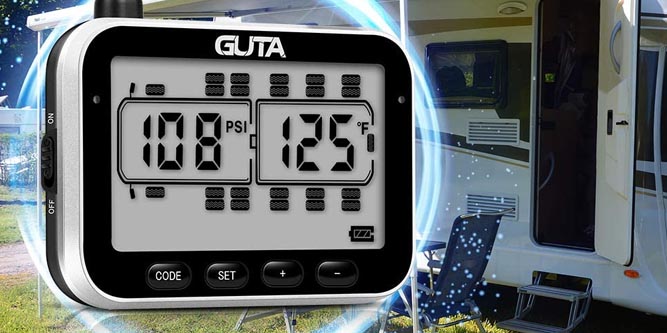Guta RV TPMS
Nowadays, just about every vehicle on the road has a tire pressure monitoring system (TPMS). They’re actually mandatory on modern vehicles, so they will soon be ubiquitous. A TPMS is exactly what it sounds like; a system for monitoring your tire pressure. When your tires are underinflated – or, less commonly, overinflated – the TPMS sends you a warning. This is the yellow tire pressure light that looks like a horseshoe with an exclamation point in the middle. There’s a good reason for this system. In years past, many avoidable accidents were caused by people unwittingly driving with underinflated tires. A TPMS system helps to prevent many of these accidents.
But this has more implications for RVs. For one thing, there are many older RVs on the road, so it’s likely yours doesn’t have a TPMS. For another thing, many TPMS warnings are false alarms. This can get expensive, since tire pressure isn’t something you want to mess around with. Without a backup, you won’t know if you have real trouble, or if you’re just getting a false alarm. This can cause expensive trips to the mechanic for no good reason. RVs have many of their own special needs, such as 12-volt DC water pumps. An aftermarket TPMS is just another one of those things you really want to have.
We’re about to review the Guta RV Tire Pressure Monitoring System. This is an aftermarket TPMS designed specifically for RVs. However, it’s also useful for other applications such as fifth wheels and trailers. It can even be used on semi trucks if you wanted to. So, how well does it perform compared to other, similar systems? To discover that, we’ll need to take a closer look at how the system works. We’ll talk about the display unit, as well as the individual tire sensors. We’ll talk about what you can detect, and what kinds of alerts you’ll receive. Once we’ve got a more complete picture, we’ll be well-positioned to make our final judgement. Let’s begin!
Indirect vs. Direct TPMS
Another reason you might want the Guta TPMS is if your existing TPMS system is an indirect system. Why would this make a difference? Here’s a quick explanation of indirect vs. direct TPMS systems, and why a direct one is superior.
An indirect TPMS system does not utilize its own pressure sensors. Instead, it taps into the data from the vehicle’s anti-lock brake system. Because the tire will change size as the pressure changes, the rate of revolution will also change. This can trip the TPMS system without the need for an actual pressure sensor. This has some obvious benefits. For one thing, it’s inexpensive, since you don’t need extra sensors. For another thing, it’s easier to maintain, since there are fewer parts.
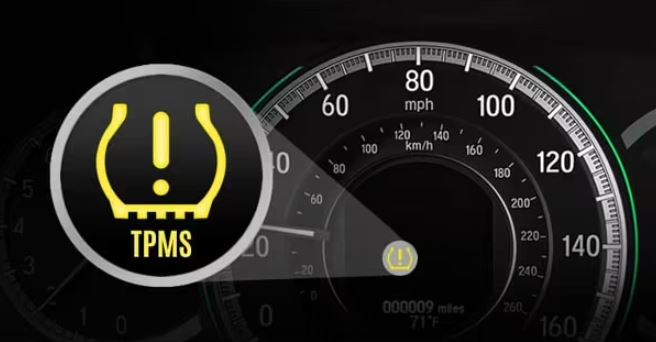
Unfortunately, indirect TPMS systems have some significant drawbacks. For one thing, they need to be recalibrated every time you change tires, or whenever you reinflate. They also need to be reset every time you rotate your tires. Despite all this, they’re less accurate than a direct system.
A direct TPMS system uses its own sensors to directly monitor your tire pressure. This gives more precise readings – far more accurate than a raw rotation speed measurement. Another benefit of a direct TPMS is that the sensors can pick up additional data besides just pressure. For example, many TPMS systems detect your tires’ temperature as well as their pressure.
Of course, a direct system isn’t perfect. They do have some disadvantages. For one thing, they cost more than indirect TPMS systems. And while they require less frequent maintenance, the maintenance is more costly. That said, the benefits far outweigh the costs. In addition to accuracy, you also get readings faster, in real time. This can alert you to faster leaks than an indirect system can. Moreover, a direct TPMS won’t get thrown off just because you got your tires rotated. Because they’re not sensitive to changes in rotation speed, it makes no difference which wheel they’re on. Finally, a direct TPMS can be used in your spare tire as well. This ensures that you’ll be forewarned if there’s something wrong with your spare.
A TPMS is one of several components that are different on an RV than on a car or a truck. Another good example is a wireless backup camera. You need a different design, because you’re sending a wireless signal over a longer range.
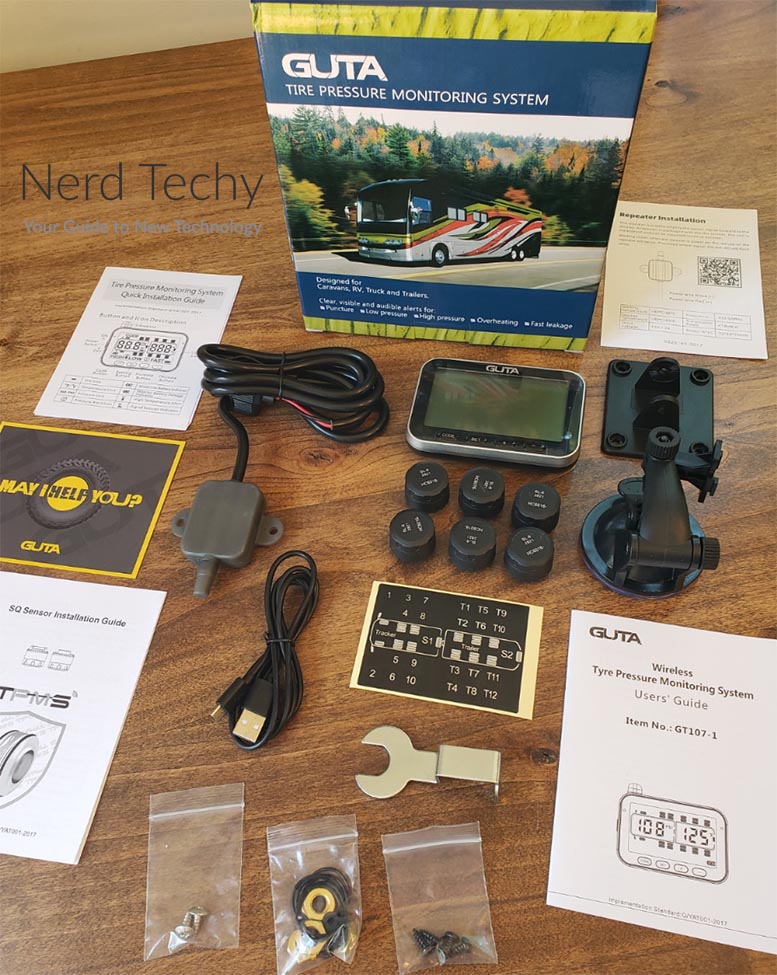
Overall Design
There are three main components to the Guta RV Tire Pressure Monitoring System. These are the display, the repeater, and the sensors themselves. Let’s go over each component in order.
The display unit mounts on your dash, and consists of a large LCD display with buttons around the outside. The overall size is 2.99 inches tall and 3.9 inches wide. That’s big enough for easy visibility, but not big enough to obscure much of your view. This makes it ideal for driving. The main part of the display provides a rough outline of your vehicle. On this vehicle, you’ll see up to 22 tires, depending on your system’s setup. Using the buttons, you can cycle through the tires, and view their status individually. On the left, you’ll see the pressure, either in PSI or BAR. The temperature is located to the right, and can be set to Fahrenheit or Centigrade.

The controls are straightforward and easy to operate. On the right side of the housing, there’s a simple on/off switch that you can toggle up and down. At the bottom, there are four black plastic buttons. The first two, the “Code” and “Set” buttons, are used to navigate tires and select settings. The “+” and “-“ buttons are used to adjust your settings up and down. We’ll explain how that works in a second.
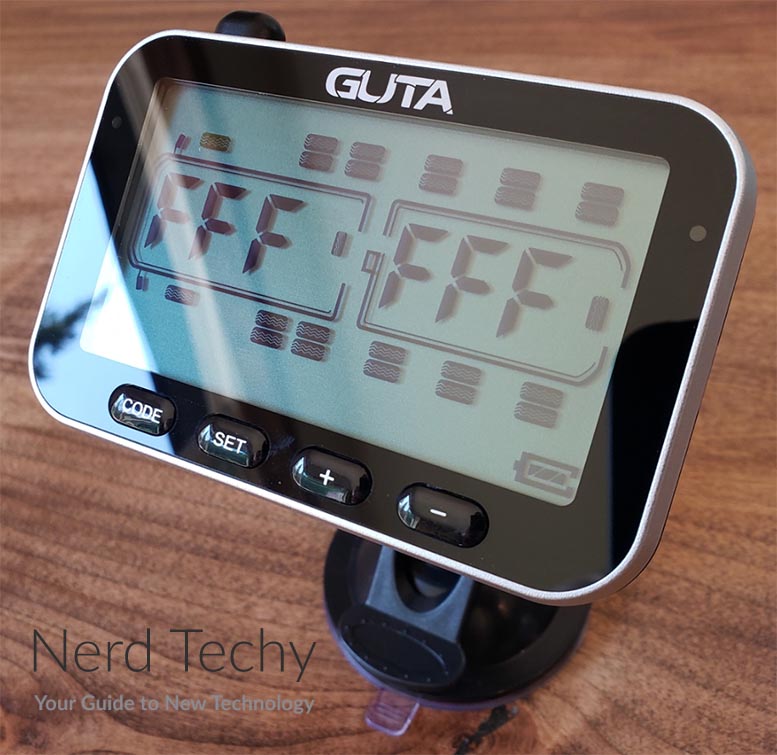
The second main component of the Guta system is the repeater. This is a compact, molded plastic housing that measures about 2 ½ inches to a side. It has a flange on each side, with screw holes that are designed for easy mounting. This repeater can be hidden, but needs to be positioned halfway between the front and rear of the vehicle. It also has to be hardwired into your RV’s electrical system. This makes installation a little more involved than a TPMS system on a four-wheeled vehicle.
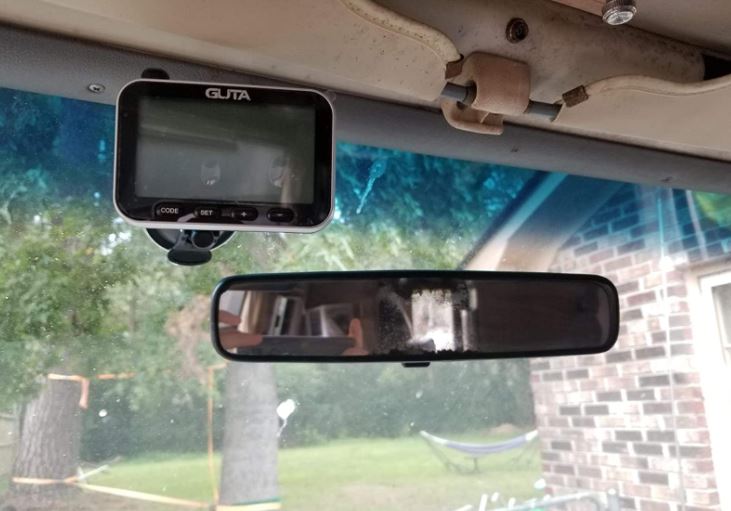
The number of sensors you get depends on the version of the TPMS you purchase. You can order it with four, six, eight, 10, or 12 sensors. You can also add additional sensors, up to a total of 22 per display. This makes it easy to fit any RV, trailer configuration, fifth wheel, or even ordinary car. The sensors themselves are durable plastic nubs that measure just under an inch in diameter. They’re entirely weatherproof, and screw directly onto your valve stems. You pair them with the display, screw them on your tires, and start driving.
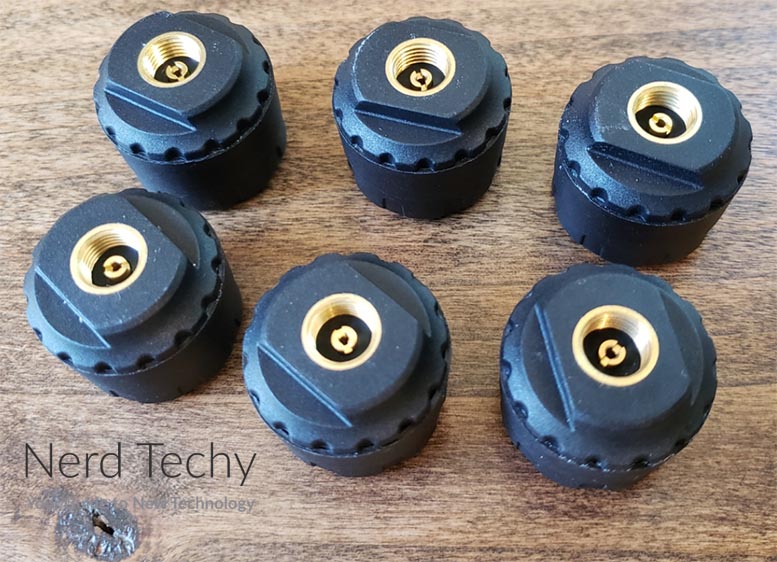
Functions and Performance
So, now that the TPMS is set up, how well does it work? To begin with, you get excellent range. Without the repeater, the total range is about 36 feet. That’s more than enough for most RVs. But with the repeater, that range extends to 80 feet. That’s longer than any ordinary street-legal vehicle, so it will literally work with any length RV.
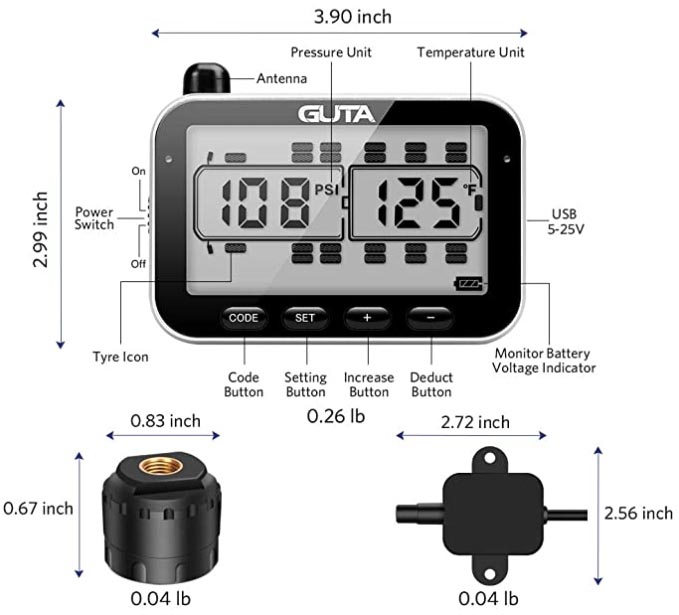
The Guta system can measure anywhere from 0 to 188 PSI, and anywhere from -4 to 185℉. This gives you enough range to monitor any tire under virtually any road conditions. You can set your own custom pressure levels, and adjust them as needed. If the pressure drops 25 percent lower than your setting, you’ll get a low pressure alarm. If it rises more than 25 percent above your setting, you’ll get a high pressure alarm. This makes it easy to get warnings for different tire types. You can even set different levels for different tires, in case your front and rear axle tires are different.

In addition to basic pressure warnings, you also get a couple of specialized warnings that provide useful information. To begin with, you get a warning for high temperature. This can help prevent blowouts – for example, due to heavy braking during a downhill drive. There’s a warning for fast leakage, which can help you discover when you have a minor leak. Additional warnings will let you know if the sensor loses contact or if its battery runs dead.
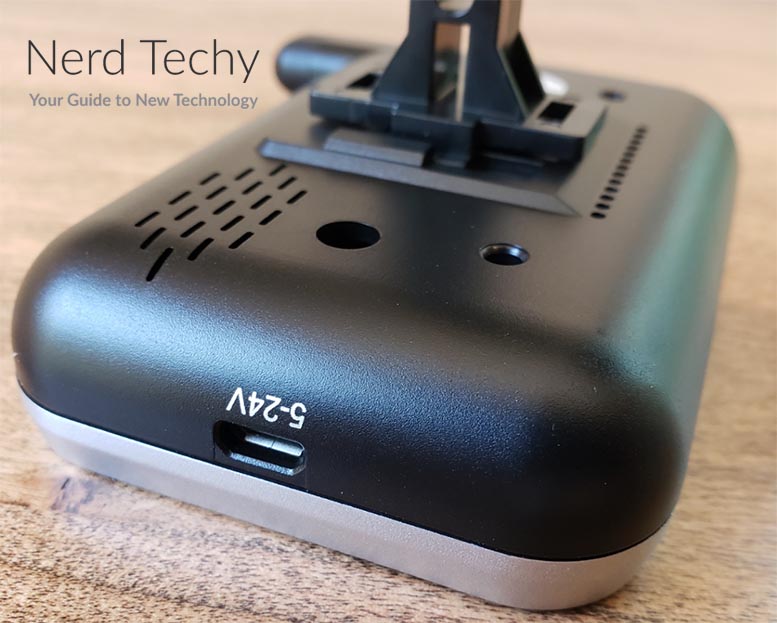
The base unit is powered by USB, although it also has an internal battery. It will run for about four hours when fully charged, and will hold a charge for about two weeks. During normal operation, it makes the most sense to leave it plugged in whenever you’re driving.
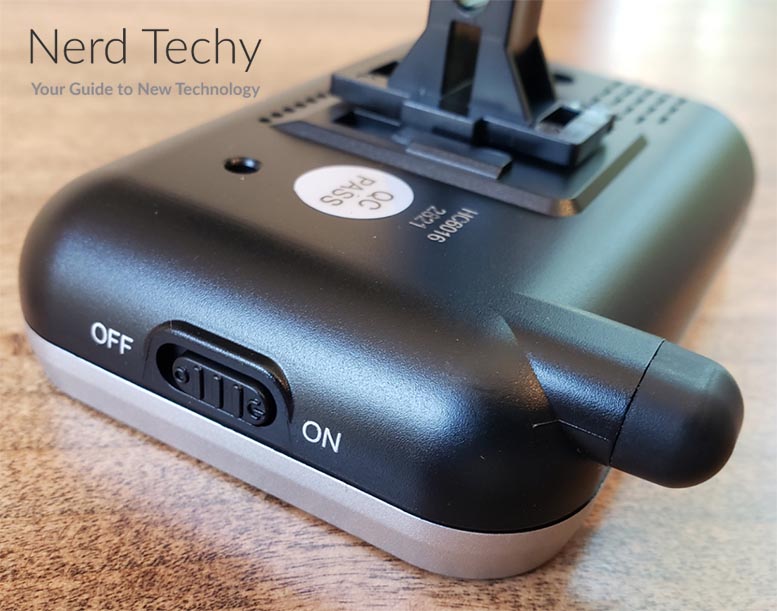
The sensors themselves use CR2032 batteries, which fit under a secure lid. How long they will last is variable, depending on how much you drive. In general, you’ll only need to replace them every few months. But they go to sleep when the vehicle isn’t in motion. So they’ll last a lot longer when your RV is parked than on a cross-country trip. One downside of this is that they sometimes go to sleep in the middle of a drive. They’ll eventually wake up when you hit a bump or take a sharp turn.
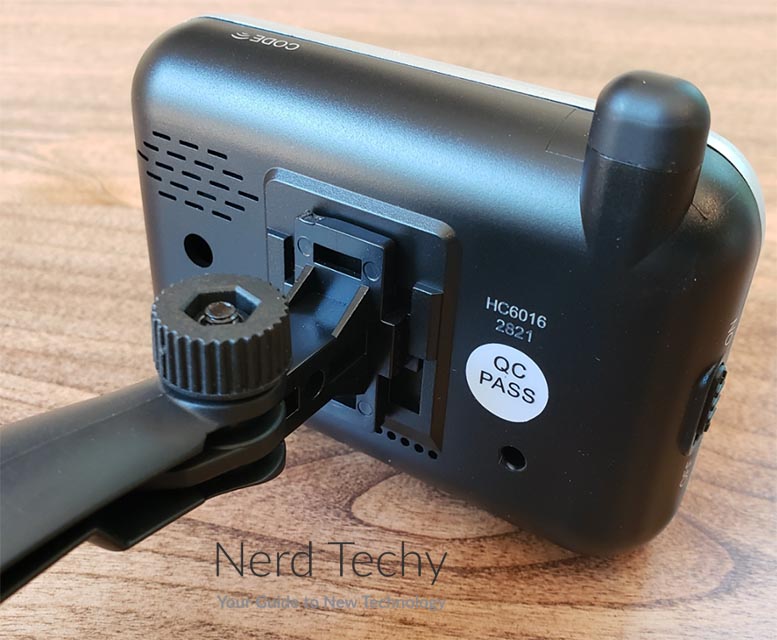
Final Verdict
The Guta RV Tire Pressure Monitoring System is a well-designed TPMS with a lot to recommend it. It’s capable of working with any RV, large or small, as well as fifth wheels and tailers. It has an easy-to-read display with easy-to-use controls. And the sensors themselves are well-engineered; they don’t fail, fall off, or give a lot of false alerts. To be fair, the repeater needs to be hardwired, and the sensors sometimes fall asleep. But you’ll get an alert when they do, along with alerts for just about any other problem. Whether you need a backup TPMS or whether you don’t have one at all yet, this is a good choice.
Meet Ry, “TechGuru,” a 36-year-old technology enthusiast with a deep passion for tech innovations. With extensive experience, he specializes in gaming hardware and software, and has expertise in gadgets, custom PCs, and audio.
Besides writing about tech and reviewing new products, he enjoys traveling, hiking, and photography. Committed to keeping up with the latest industry trends, he aims to guide readers in making informed tech decisions.

